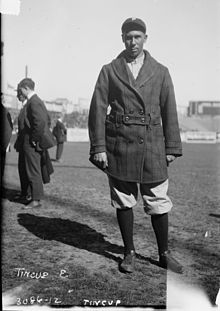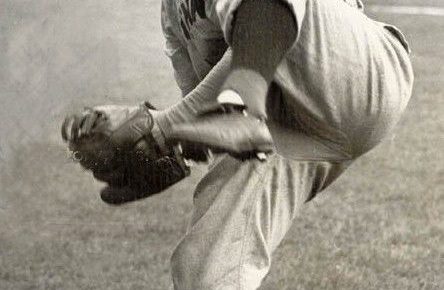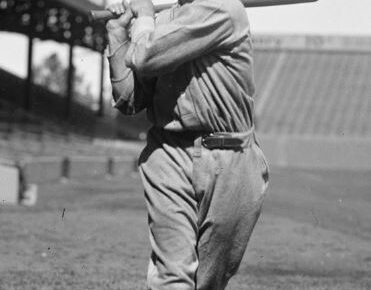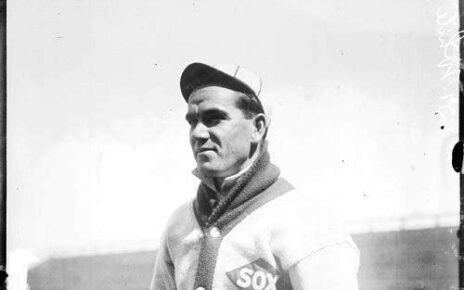For a few years, I was lucky enough to consider myself among the burgeoning number of fans who were falling in love with Shohei Ohtani. Nowadays everyone, sans New York Yankees fans, is in love with the slugging flamethrower. That’s good though because they should be; Ohtani is awesome, and really all that is good about baseball. He is a phenom, a true two-way stud, and any fan who gets to experience him on the diamond is all the better for the experience.
A common refrain when building up Ohtani’s debut with the Los Angeles Angels was citing Babe Ruth as the last legitimate two-way baseball player. I was as guilty of it as everyone else, but the fact is there have been a lot of lesser-known two-way players forming a bridge from Ruth to Ohtani. They played in Minor League Baseball, the Negro Leagues, and many foreign or independent leagues. Sometimes they were great, other times they were bad, but they did exist. They helped to keep the flame of the two-way player alive, and I’m going to give them their due.
First up we have Ben Tincup, a right-handed hurler and left-handed batter. He first donned a professional baseball uniform in 1912 for the Sherman Cubs of the Texas-Oklahoma League. He performed as a starting pitcher in the early years of his career, including a rather successful short stint in the National League with the Philadelphia Phillies. In 1917 he was playing for the Little Rock Travelers of the Southern Association. Based on the strength of his plate results as a pitcher with the Providence Grays of the International League the previous year, the Travelers played him in 66 games in the outfield. He still entered 33 games at pitcher for the Travelers. His final line that season was a record of 11-10 with an ERA of 2.50 and a WHIP of 1.045 in 202 innings pitched. At the plate he produced a slash line of .272/unknown/.394. He had 94 hits and 3 home runs in 345 at-bats. It’s an incomplete data set as there are no base on balls records to be found, but certainly numbers worth taking note of for a two-way player.
Tincup didn’t return to his role as a two-way player until 1920 with the Louisville Colonels of the American Association. On the mound he went 15-12 with an ERA of 2.84 and a WHIP of 1.214 in 238 innings pitched. He also played 66 games in the outfield, slashing .331/unknown/.531 with 8 home runs and 119 hits in 360 at-bats. He was a two-way star again in 1921 for the Colonels, helping them to an AA championship. He pitched to the tune of a 9-0 record with a 2.83 ERA and a WHIP of 1.257 in 105 innings pitched. He played 62 games in the outfield, and put up respectable numbers; .284/unknown/.415 with 3 home runs and 85 hits in 299 at-bats.
It’s unclear why, but following the 1921 season, Tincup went back to simply pitching. He would go on to log one game in right field for the Phillies in 1925, but that was his last appearance in a professional game at any position other than pitcher. His batting average as a pitcher remained above .250 until 1927, and really, Tincup should have been pitching and hitting on a full-time basis every year. Alas, no matter the league he played in it seems his managers just didn’t see it that way. Even when he managed himself in 1938 for the Muskogee Reds of the Western Association, Tincup only saw action on the mound. The results were there to warrant regular two-way play, but for whatever reason, the support, or perhaps the desire, never truly was. That leaves Tincup as one of the many potential two-way regulars who was limited by the lack of opportunity.
Lead photo courtesy of Bain News Service





It looks like Ben Tincup had arm problems in 1915 which derailed his major league career. Hard to understand why his major league career ended otherwise.
Was he a spitball pitcher? Not being on a major league roster at the right time in 1919/1920 meant that a lot of the best players in the history of minor league baseball (Frank Shellenback, Rube Robinson, Paul Wachtel, Buzz Arlett) had to spend most of their careers in the minor leagues.
Two-way players were a lot more common in Babe Ruth’s (and Ben Tincup’s) day. Jack Bentley, Reb Russell and the afore-mentioned Buzz Arlett, to name three. I mentioned Bentley in a blog post I wrote about Ohtani last May: https://notanotherbaseballblog.wordpress.com/2018/05/05/shohei-otani-beating-the-shifts/
I’m not sure if Tincup was a spitball pitcher or not. Based on the era he played in, more likely than not he was using a doctored ball at times, either intentionally or unintentionally.
With Tincup there is always the possibility that his otherness as a Native American played a role. I’ve never read anything that flat out says his career in the majors was stymied because of his race, but, it was the case for others, so perhaps it was the case for him. Otherwise, it could have been a hurt arm, simple lack of open slots, etc.
I already have a few more write-ups on the way about two-way players during the Deadball Era. It appears though, that they never really utilized them long term in that fashion, at least not the ones I have written up so far.